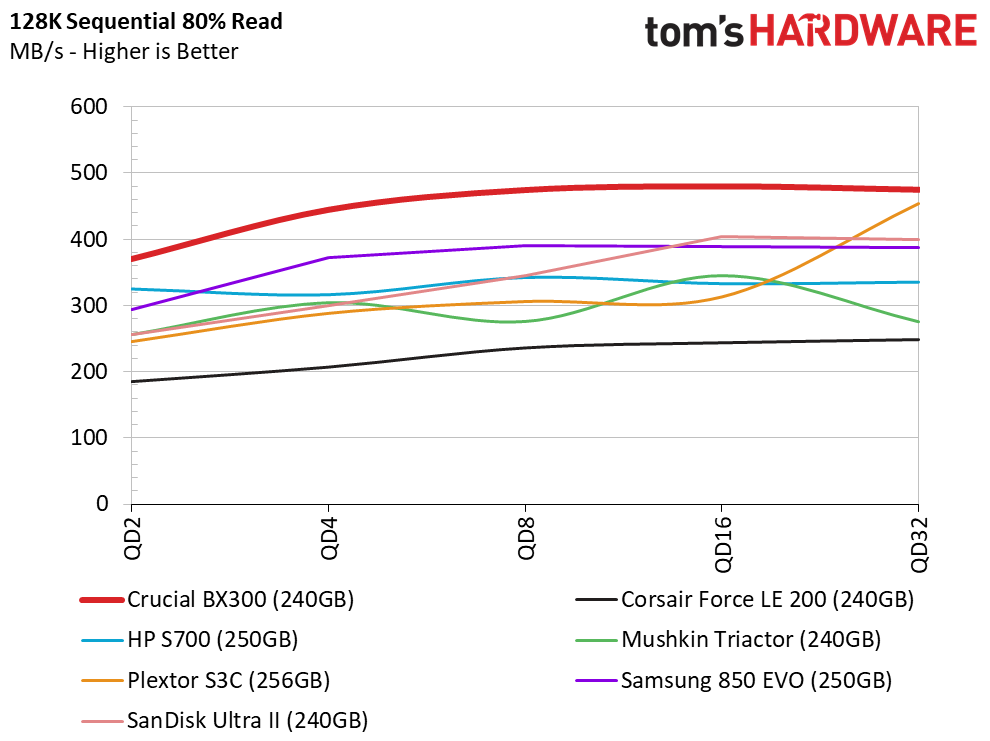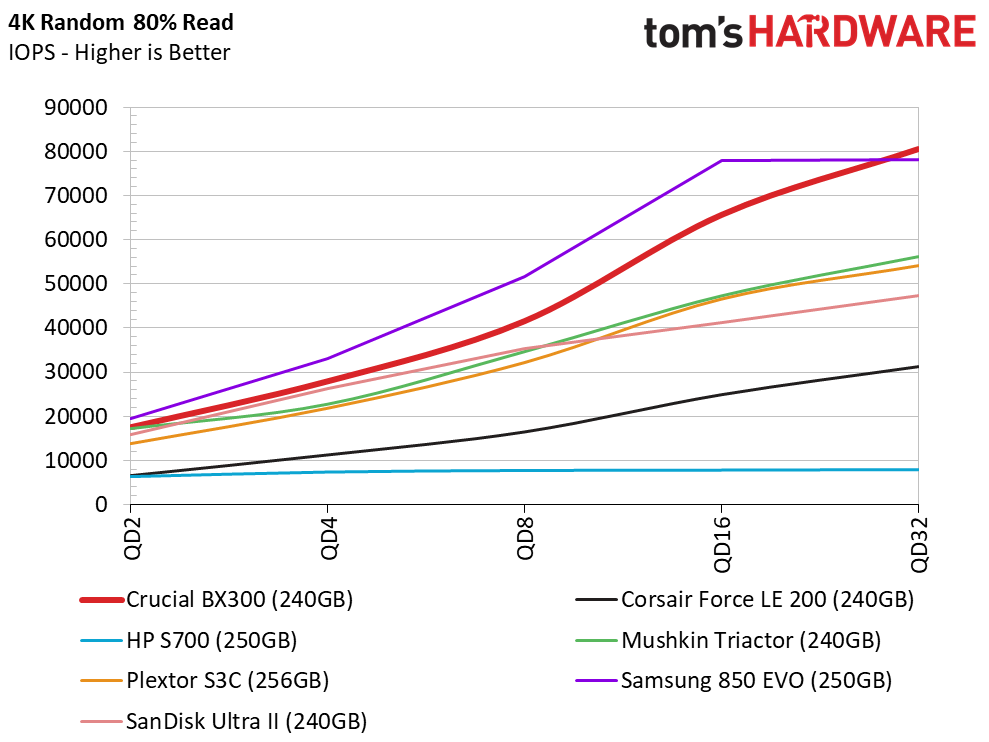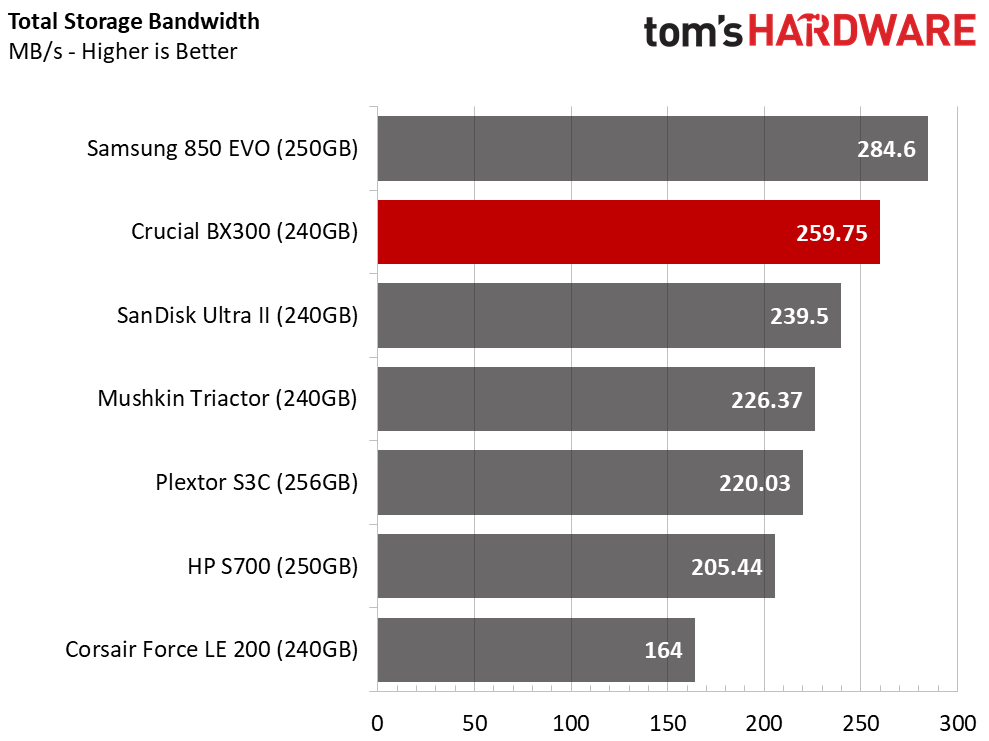Crucial BX300 SSD Review
Why you can trust Tom's Hardware
256GB Class SSD Performance
Comparison Products
In my opinion, 256GB SSDs have fallen out of favor with most enthusiasts for several reasons. The first is simply the evolution of the data we store. Movies are larger, games are massive, and modern high-speed internet gives us access to more of both. The drives have also changed over the last few years. Large NAND die have reduced parallelism inside the SSD, so some products have come up short in the performance department. You will see some of that in this review.
The manufacturers are also aware of the lack of enthusiasm for 256GB SSDs. Crucial didn't send us the 275GB BX300. Some companies have even eliminated this capacity altogether for some premium models.
The BX300 is on the other end of the market, but it aspires to be something more. It doesn't get much better than the Samsung 850 EVO 250GB in this class. The EVO is more difficult to find these days, but Newegg seems to have it in stock frequently. The SanDisk Ultra II is still one of the best-selling SSDs on Amazon, but we expect SanDisk to retire it as the company allocates more of its production to 3D technologies.
We have two new DRAMless products in the 256GB category; the Corsair Force LE with a Phison S11 controller and an HP S700 with the SM2258XT. This new class has emerged as the new entry-level, but companies have yet to lower prices enough to differentiate the products from those with a DRAM buffer.
Sequential Read Performance
To read about our storage tests in-depth, please check out How We Test HDDs And SSDs. We cover four-corner testing on page six of our How We Test guide.
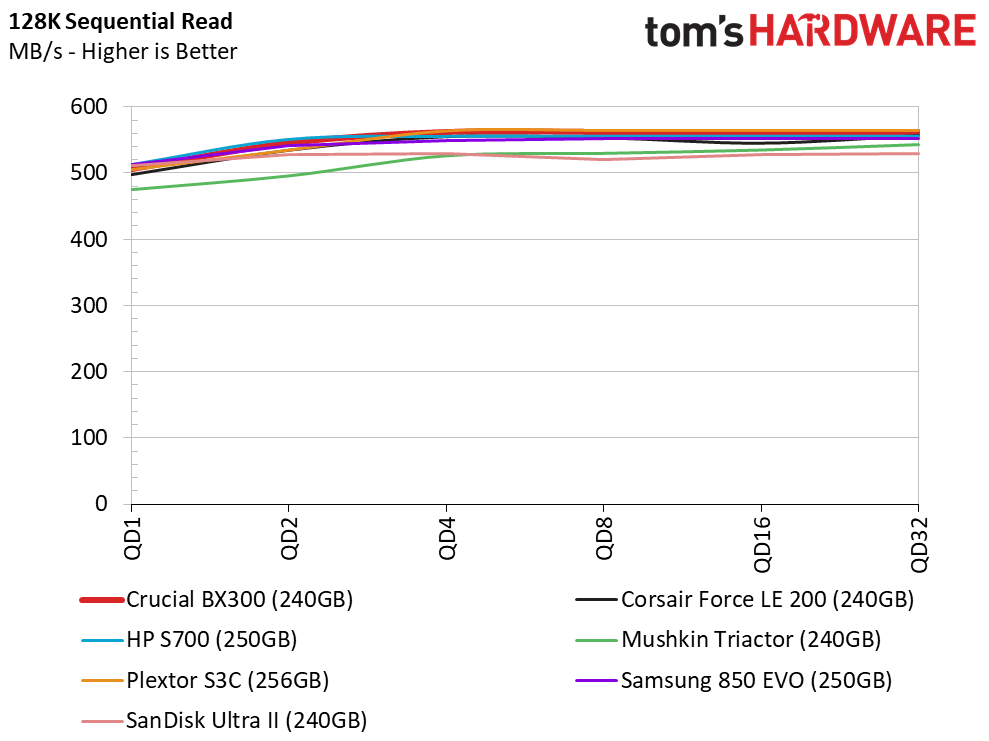
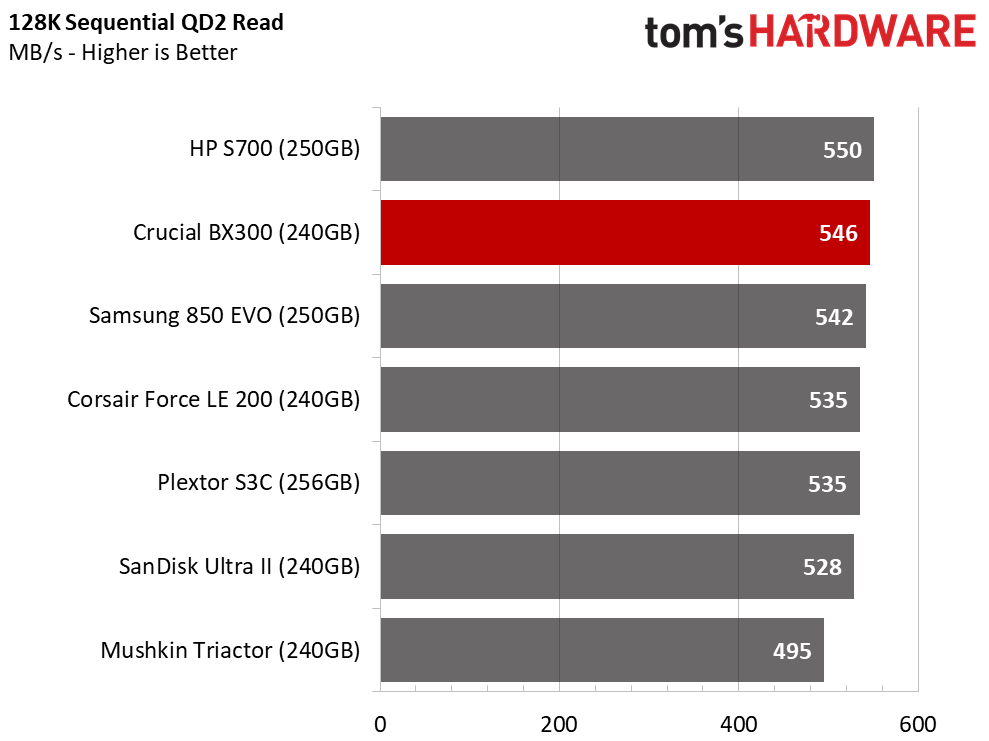
As with the higher capacity Crucial BX300 and the other products, all the SSDs deliver strong sequential read performance. The BX300 outperforms the 850 EVO at QD2 by a few megabytes per second. Both drives trail the new HP S700 DRAMless SSD.
Sequential Write Performance
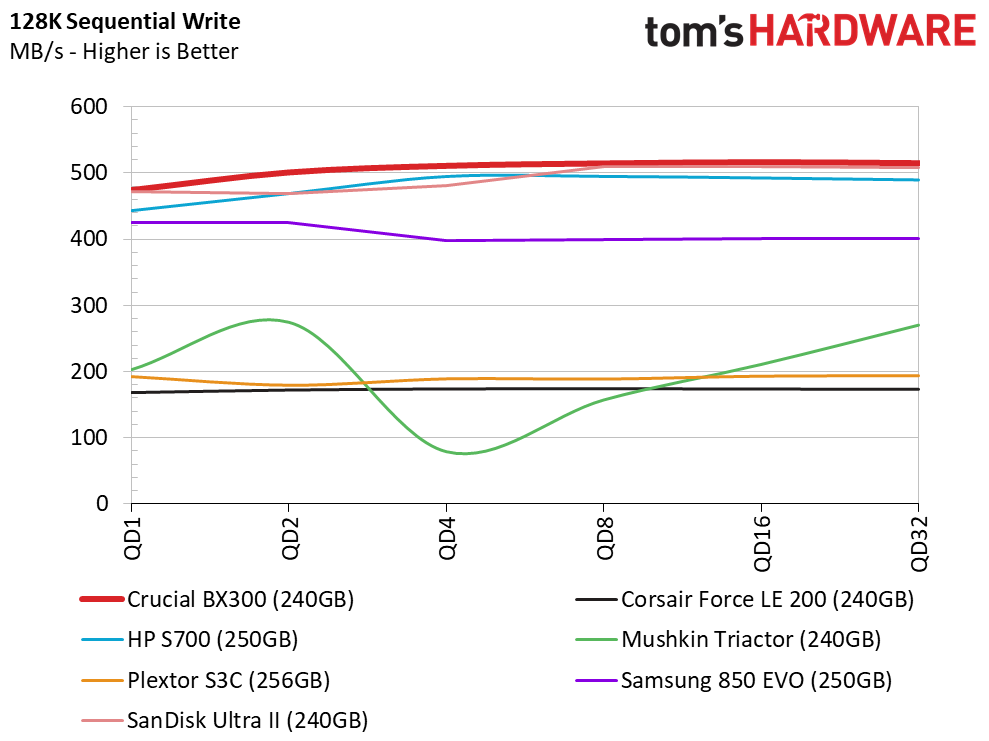

We see much more variation during the sequential write test. The BX300 leads the charge; it's the only product with over 500 MB/s of throughput. The drive is a throwback to when 256GB SSDs could still deliver high sequential write performance.
Get Tom's Hardware's best news and in-depth reviews, straight to your inbox.
Random Read Performance
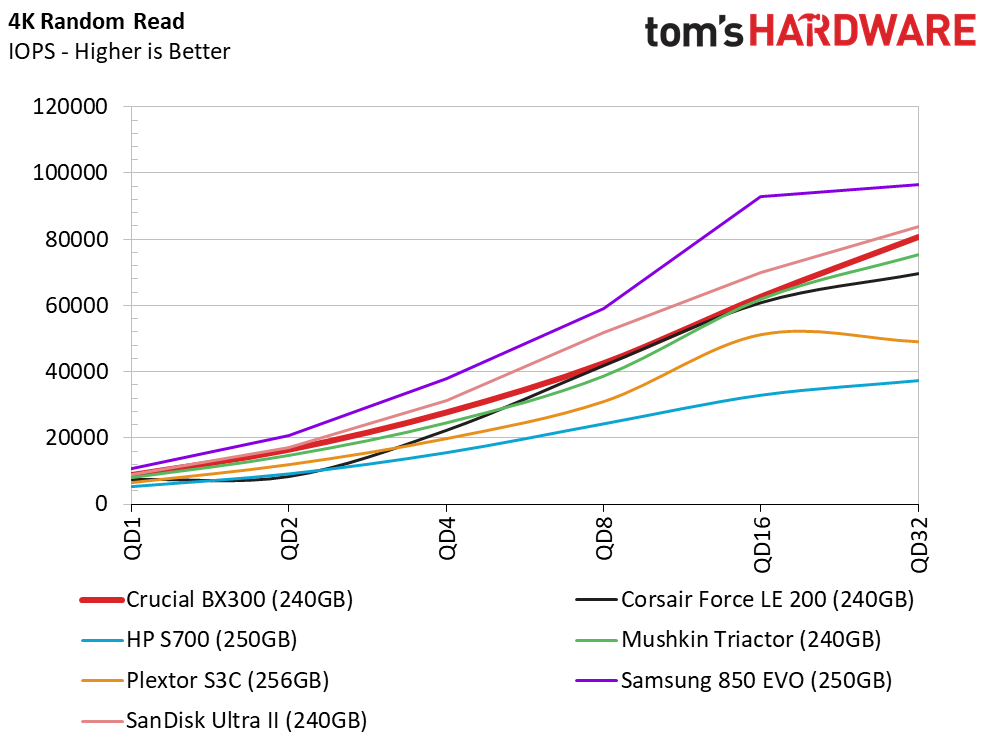


The 240GB BX300 doesn't break into the 10,000 IOPS club at QD1, but it isn't very far off. Again, we see impressive scaling as we ramp up the workload. The mid-size BX300 doesn't reach the same peak QD32 performance as its 480GB counterpart.
Random Write Performance
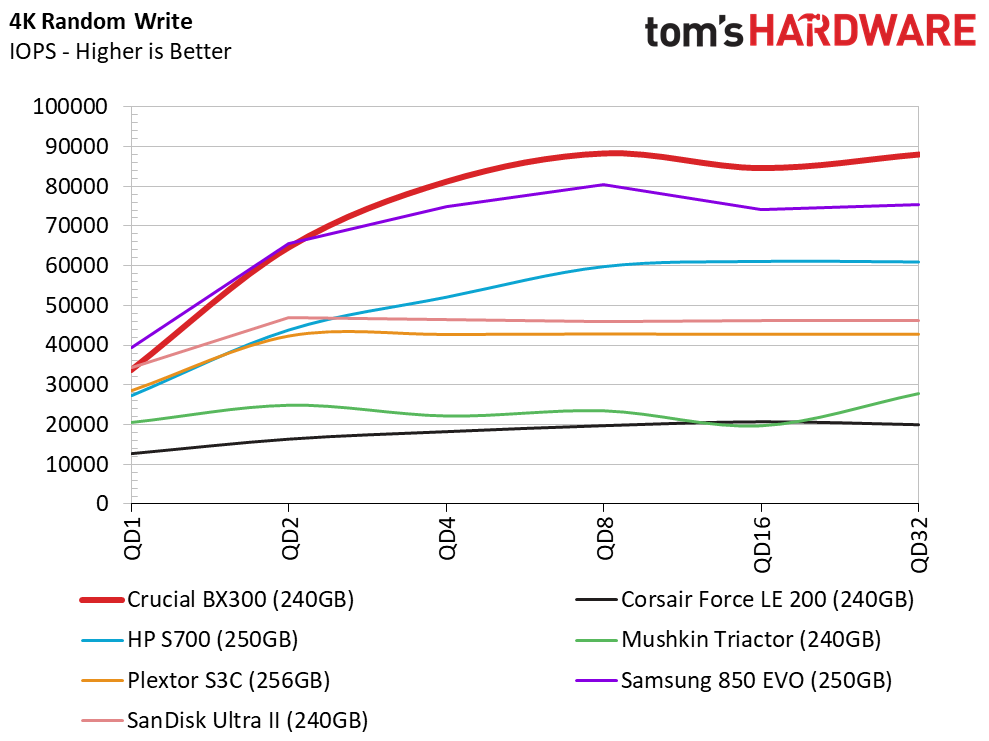

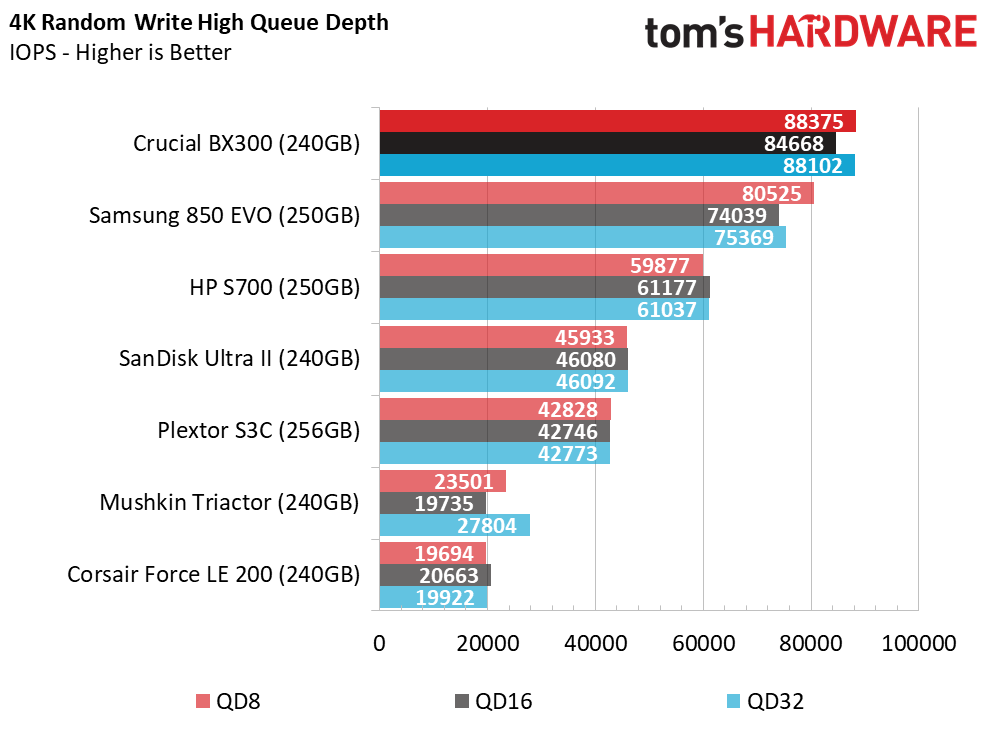
The newest Crucial drive scores a little lower in the QD1 random write test, but it turns into a rocket ship at QD2 and beyond.
80% Mixed Sequential Workload
We describe our mixed workload testing in detail here and describe our steady state tests here.
The BX300's high performance carries over to the mixed sequential workload.
80% Mixed Random Workload
We can say the same about the mixed random workload test. The 850 EVO 250GB is also very fast, which is one of the reasons many choose it over other products.
Sequential Steady-State
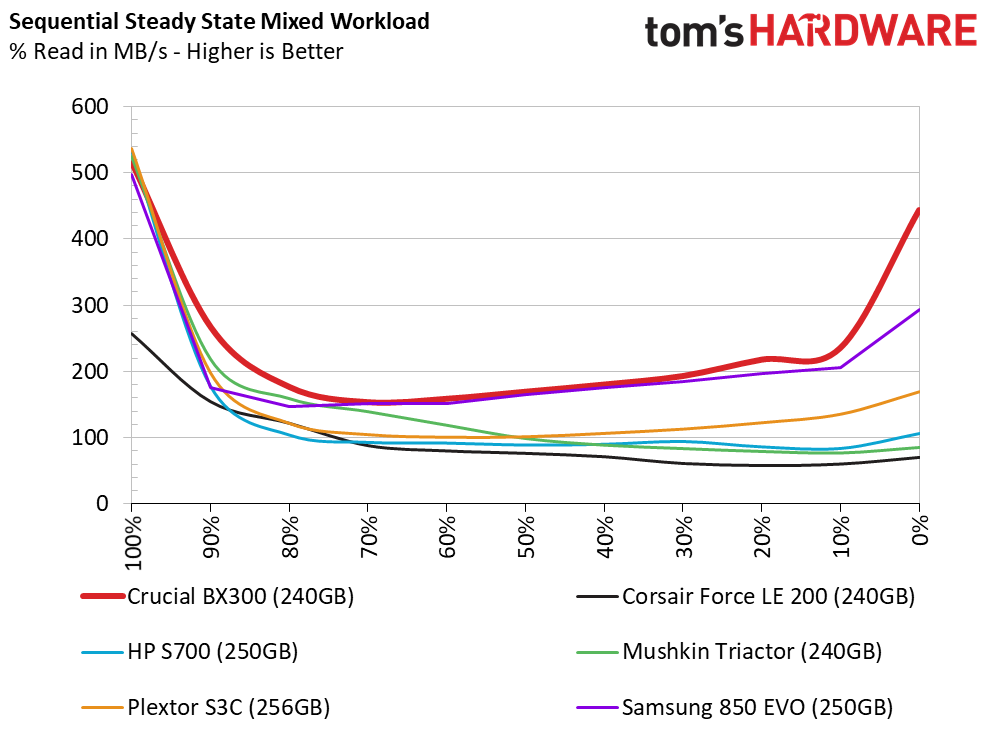
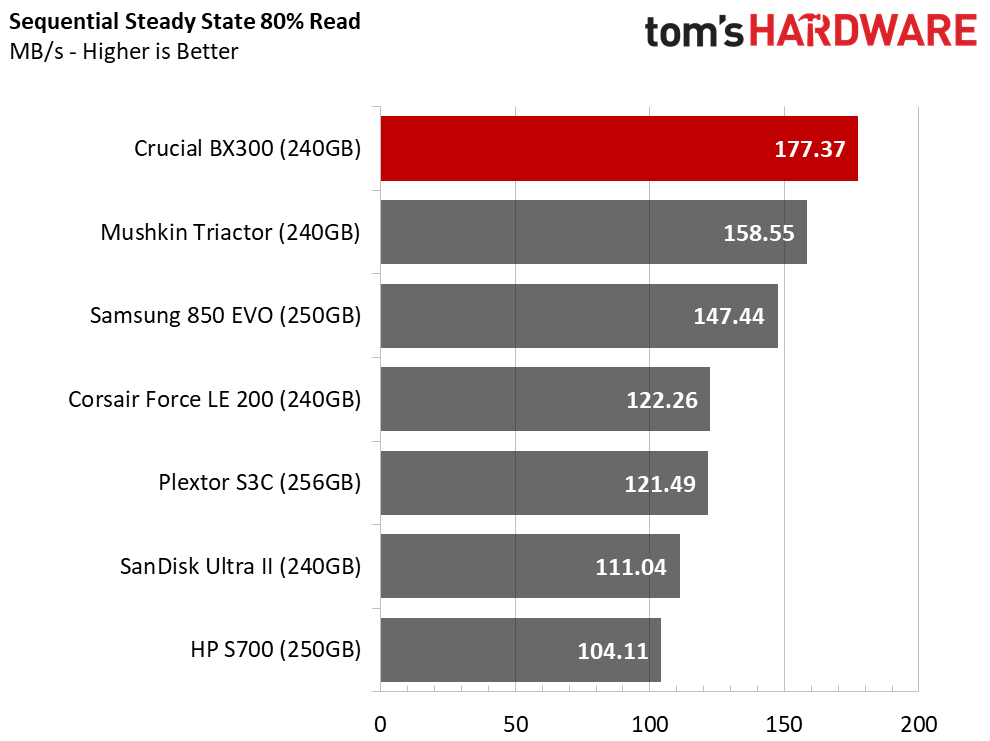
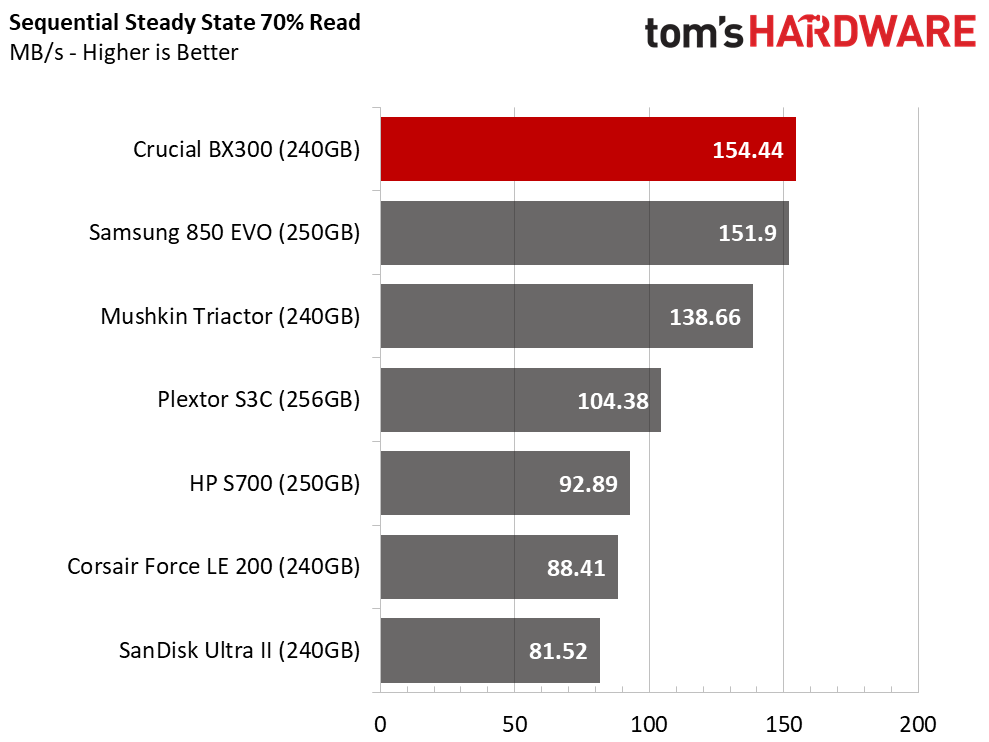
For a 256GB-class product, the Crucial BX300 performs well in the sequential steady-state tests. The drive doesn't dominate the 850 EVO as it does in the 512GB-class, but it's still impressive to see a new consumer SSD performing so well after so many have come to market and fell flat.
Random Steady-State
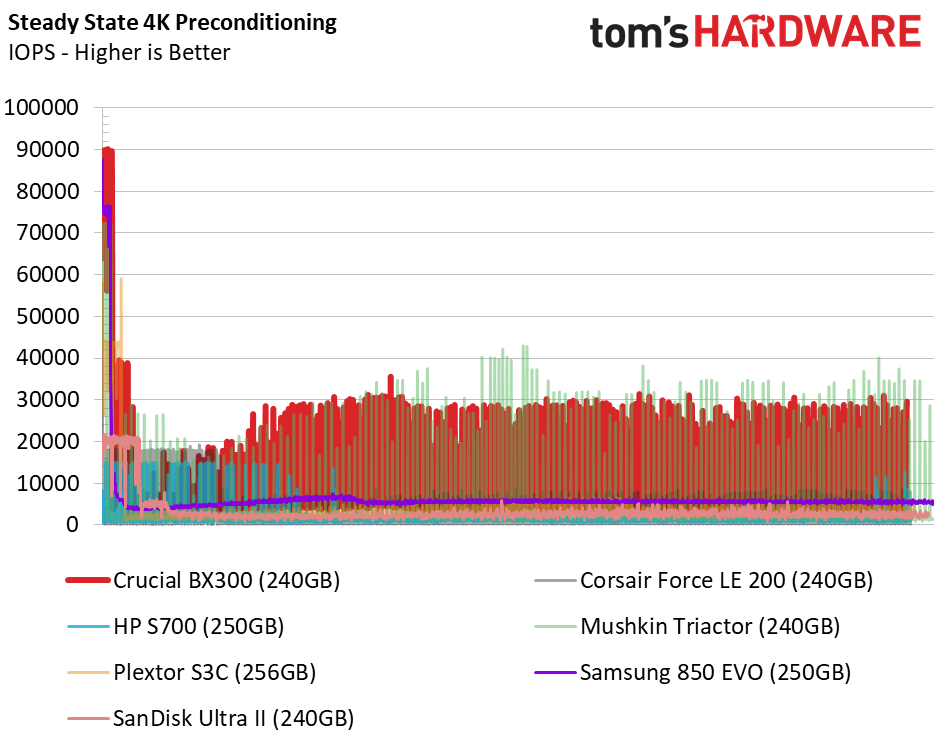

Speaking of falling flat! The random 4KB steady-state test shows how many of the new entry-level SSDs fall to very low performance when pushed with difficult workloads, or when the drives are nearly full. It's truly refreshing to see the BX300 stay off the floor. The performance isn't consistent, but we've never found solid performance consistency in low-cost consumer SSDs.
PCMark 8 Real-World Software Performance
For details on our real-world software performance testing, please click here.
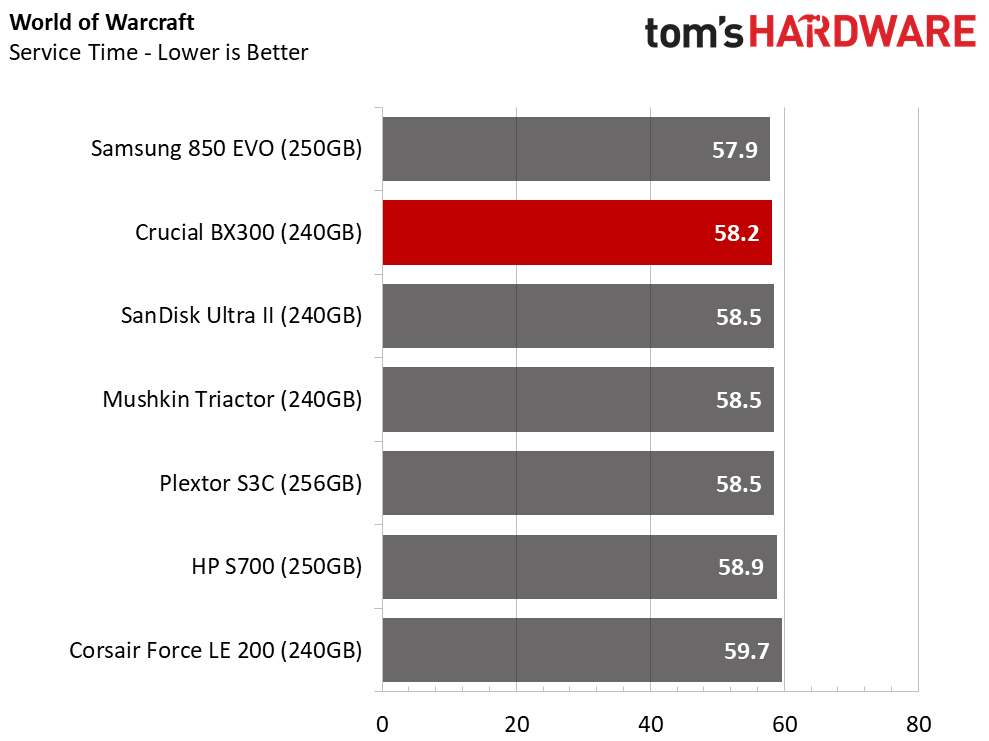
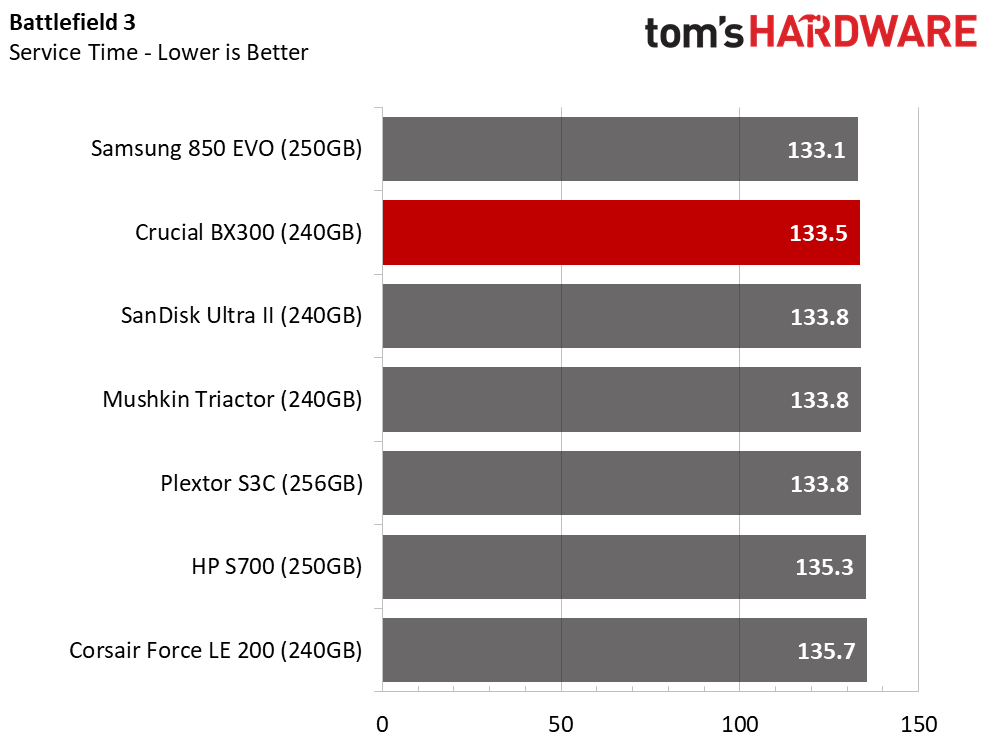
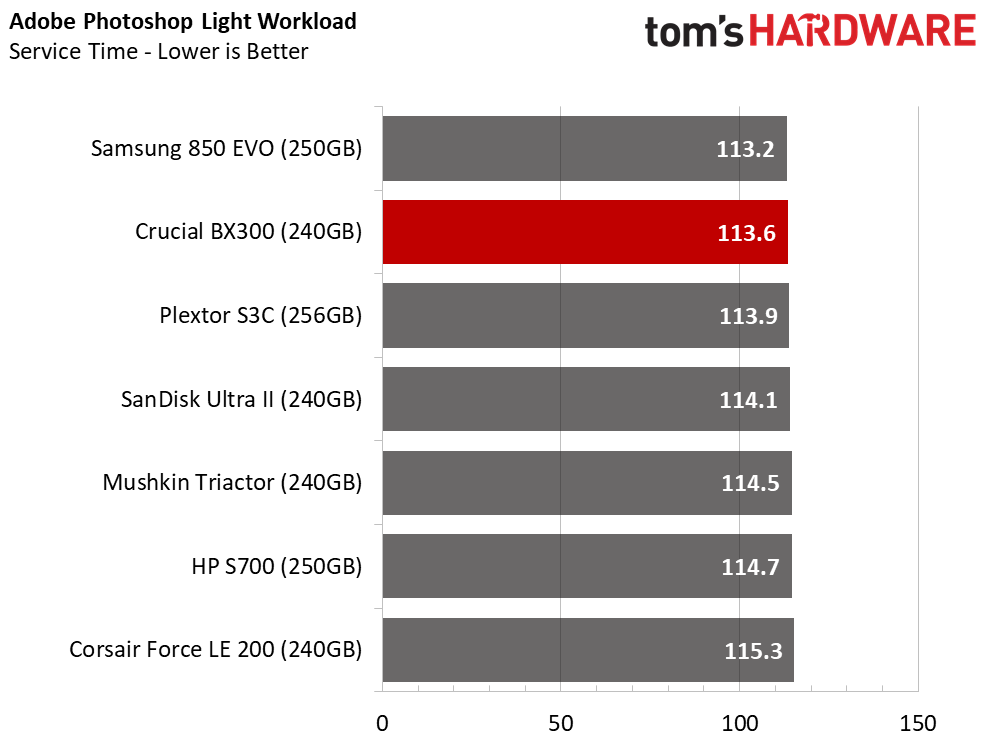

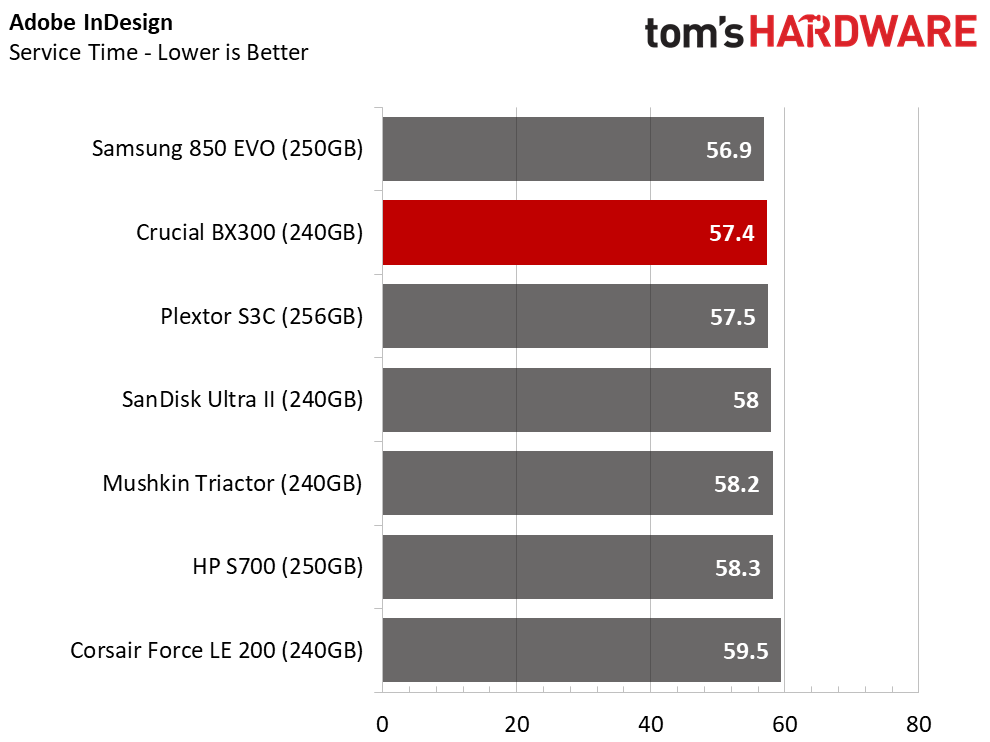


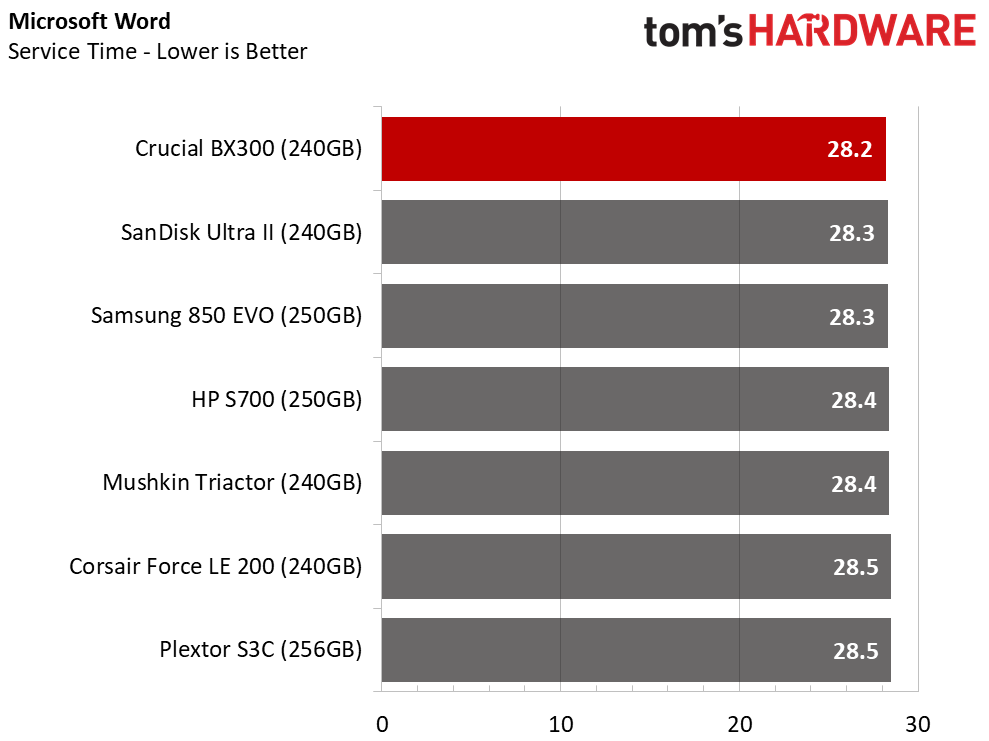
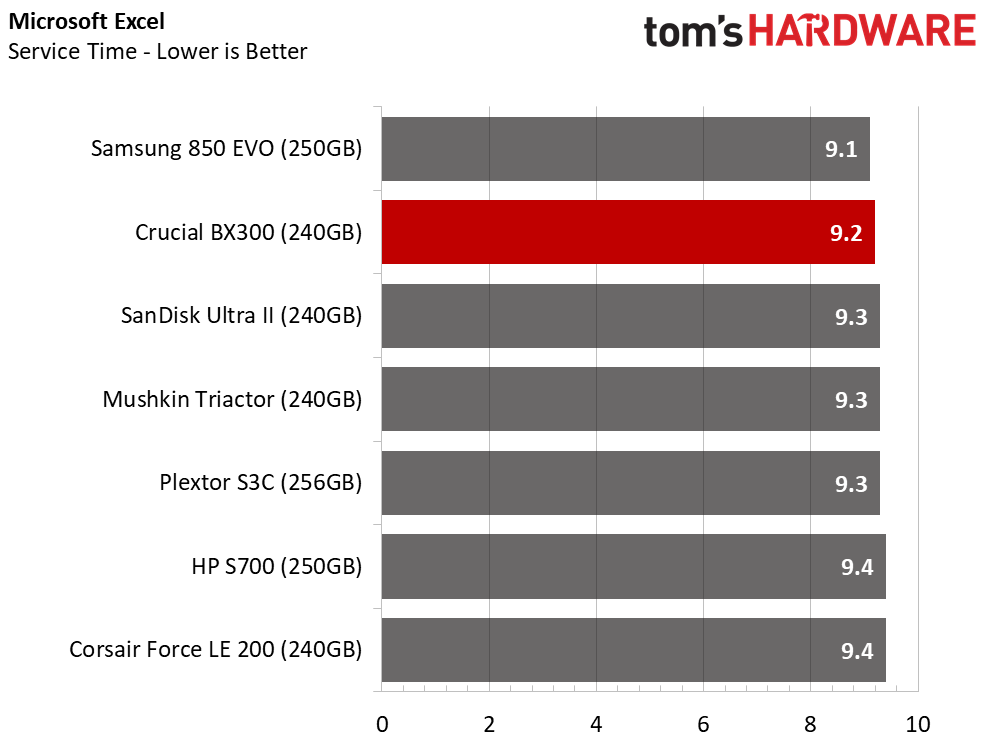

The Crucial BX300 is a true competitor to the 850 EVO in this capacity class. It even outperformed the EVO in one test.
Application Storage Bandwidth
The BX300 and 850 EVO are very close together. Again, you wouldn't be able to tell the difference between these two products.
PCMark 8 Advanced Workload Performance
To learn how we test advanced workload performance, please click here.

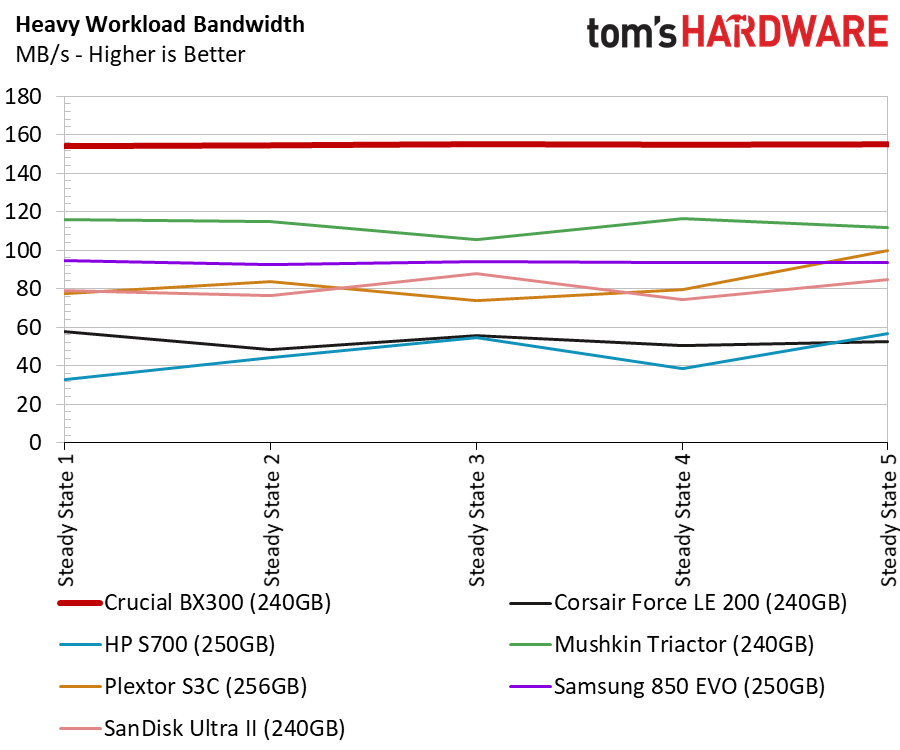

The BX300's robust steady-state performance again leads to high performance in our PCMark 8 test. Unlike the larger drive, the 240GB BX300 recovers fully during the 300-second idle. The idle time should be sufficient for any drive to recover, but the same dual core processor in the BX300 512GB can't swap data fast enough to clean up enough space for the next test. The smaller 240GB drive can complete the task, but not because it's faster -- it just has less data to organize.
Total Service Time


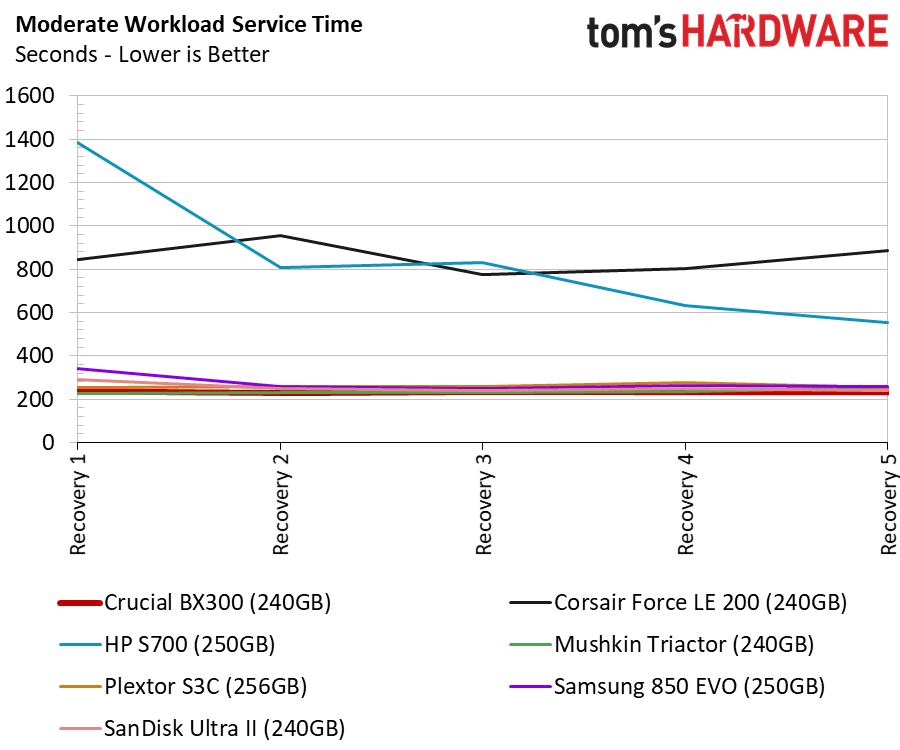
The BX300 leads the way in both the heavy and recovery phases. The drive delivers exceptional performance compared to other recent products.
Disk Busy Time
The disk busy time test shows us that the BX300 doesn't have to work very long to finish the workload. This can carry over to longer battery life in notebooks because the drive transitions into a lower power state sooner.
Responsiveness Test

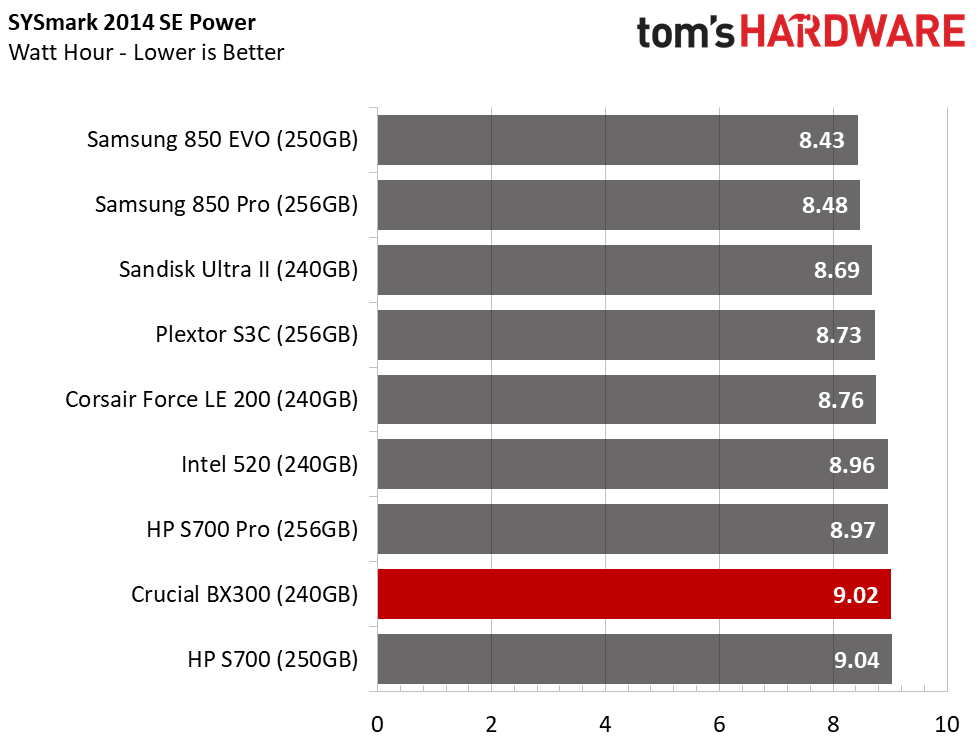
The BX300 uses quite a bit of power during operation, and that will hinder notebook battery life. Meanwhile, latency is very good. It even matches the responsiveness of the Samsung 850 Pro 256GB.
Notebook Battery Life

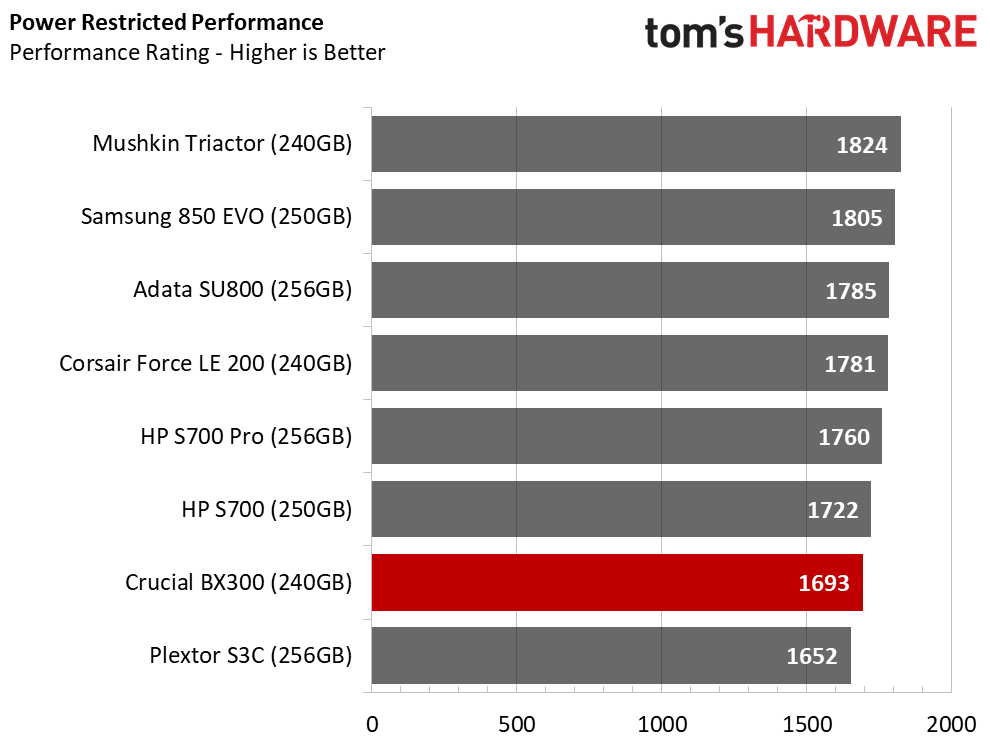
The extra power consumption hurts battery life, but the Crucial BX300 still delivers a solid 352 minutes of battery life in our Lenovo Y700-17.
MORE: Best SSDs
MORE: How We Test HDDs And SSDs
MORE: All SSD Content
Current page: 256GB Class SSD Performance
Prev Page 512GB Class SSD Performance Next Page Conclusion
Chris Ramseyer was a senior contributing editor for Tom's Hardware. He tested and reviewed consumer storage.
-
Rdslw Why they won't make HALF 2.5 drive ? A lot of SSD don't use this space at all and in laptops this means a lot of wasted space.Reply -
Snipergod87 Reply20116257 said:Why they won't make HALF 2.5 drive ? A lot of SSD don't use this space at all and in laptops this means a lot of wasted space.
There isn't an official standard as far as i know and anything with size constraints would get M.2 SSD's. That being said some OEM solutions use short length SATA SSD's but in a full length slot. -
mitch074 I'd love being able to directly compare these newer SSDs with older ones - I own a Crucial M500 480Gb, and I'd like to know how much better a replacement would be - not only in performance (enventhough mine is pretty much bottlenecked by the SATA port) but also in lifetime.Reply -
daglesj Dear Crucial, Just for Pete's sake bring back the BX100. It's really that simple. It was a great value and performing SATA SSD. Most people didn't need anything else. It just worked well.Reply -
garry.masters this report seems a bit out of alignment w other info regarding TLC MLC SLC I have read- it was my understanding that MLC offers more endurance and thus 'enterprise ssd' is usually MLC and that Samsung Pro is both faster and higher endurance due to MLC vs TLC NAND- so why is the endurance rating on this drive lower?. Also you seem to say this drive 'is taking a different path' from Samsung, but then say the Adata SU900 and XPG SX950 are essentially similar (is the 'different path' from THEM purely price?) Regardless- looks like a good product at a good price so will consider on my next purchase.Reply -
Nintendork MLC, Crucial, 3D?Reply
https://uploads.disquscdn.com/images/289a5318d82a512bfabf083eb76988bdd7e6b01394981a68706a27cb7a671926.jpg r? -
Nintendork GARRY.MASTERSReply
We can guess that with the example of the 850 pro, endurance ratings are just cosmetically reduced to not clash with enterprise class SSD's and affect sales.
And endurance test should not only be about filling/unfilling the SSD with 0-1's tools but tons of different archives with some of them remaining on the drive (40%) to test not only endurance but data retention for 1PB+ race. -
Rdslw Reply20116295 said:20116257 said:Why they won't make HALF 2.5 drive ? A lot of SSD don't use this space at all and in laptops this means a lot of wasted space.
There isn't an official standard as far as i know and anything with size constraints would get M.2 SSD's. That being said some OEM solutions use short length SATA SSD's but in a full length slot.
My laptop have m2 OR sata due to limited space. When I noticed those SSD's are smaller, I stripped the case and Guess what, there was space for both! :) sad that It took me ~6 months from buying to get to this idea. -
dark_lord69 Reply20116120 said:Crucial rethinks the transition to 3D TLC for all consumer SSDs and releases a brilliant entry-level product that takes aim at the dominant Samsung.
Crucial BX300 SSD Review : Read more
2.5" drives are standard for laptops.
M.2 drives are smaller
There are some smaller drives that SOME laptops used to use but today they are Obsolete.
1.8" 1.3" and 0.85" were smaller drives that are no longer used.



